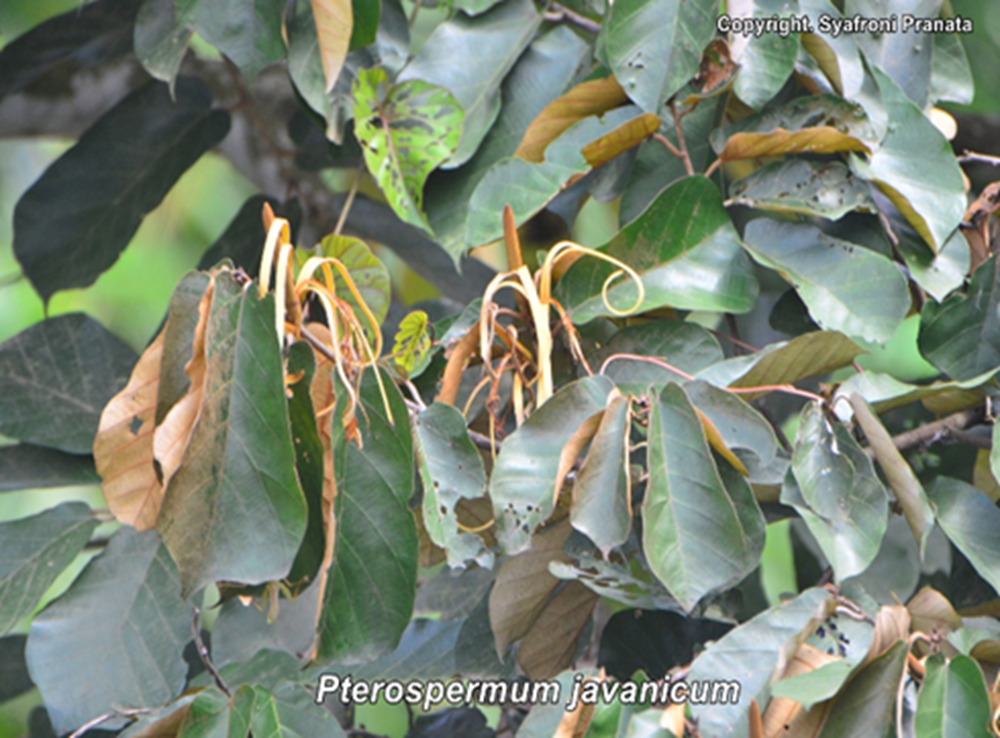Pterospermum javanicum
Jungh.
Malvaceae
Nama : Bayur.
Deskripsi : Pohon, tinggi dapat mencapai 60 m, diameter batang dapat mencapai 50 cm. Daun penumpu ada, panjang 5 mm. Daun tunggal, berseling, permukaan bawah daun keputihan-kecoklatan, berambut, bentuk pangkal daun asimetris. Pada fase anakan terkadang memiliki bentuk yang berbeda dengan daun dewasa, memerisai atau bercangap. Perbungaan tandan. Bunga kekuningan, daun kelopak sangat panjang-menirus. Buah kapsul, merekah, panjang 10.4 cm, hijau-coklat, berambut. Biji bersayap.
Ekologi : Persebaran alami dari wilayah India sampai Papua Nugini. Pada umumnya tumbuh pada ekosistem hutan dataran rendah sampai punggung perbukitan, dan hutan atas batuan kapur yang meliputi hutan primer dan sekunder. Di Kalimantan Timur banyak dijumpai di areal hutan tepi sungai (hutan riparian), hutan batuan kapur, dan lahan basah (Mesangat-Suwi).
Kegunaan : Kayu dimanfaatkan sebagai bahan bangunan. Referensi: Kessler & Sidiyasa, 1994.

